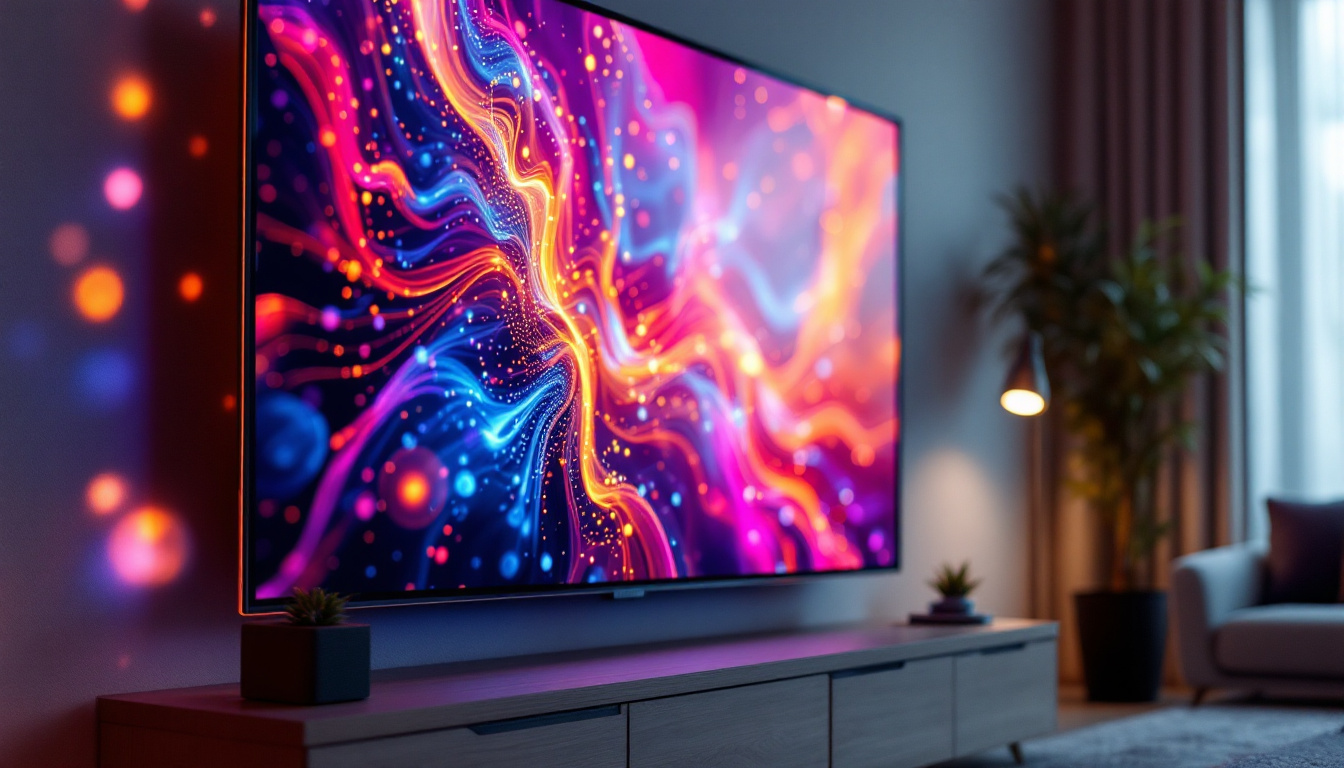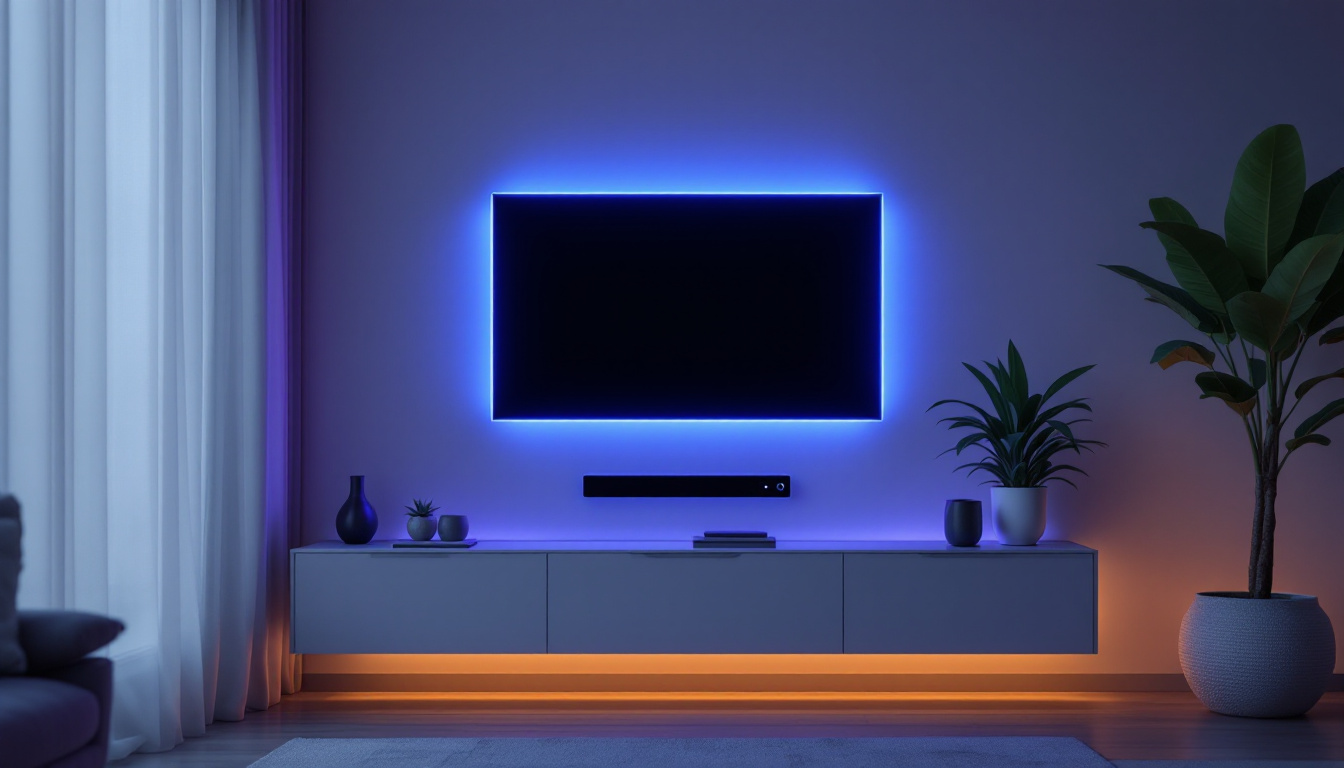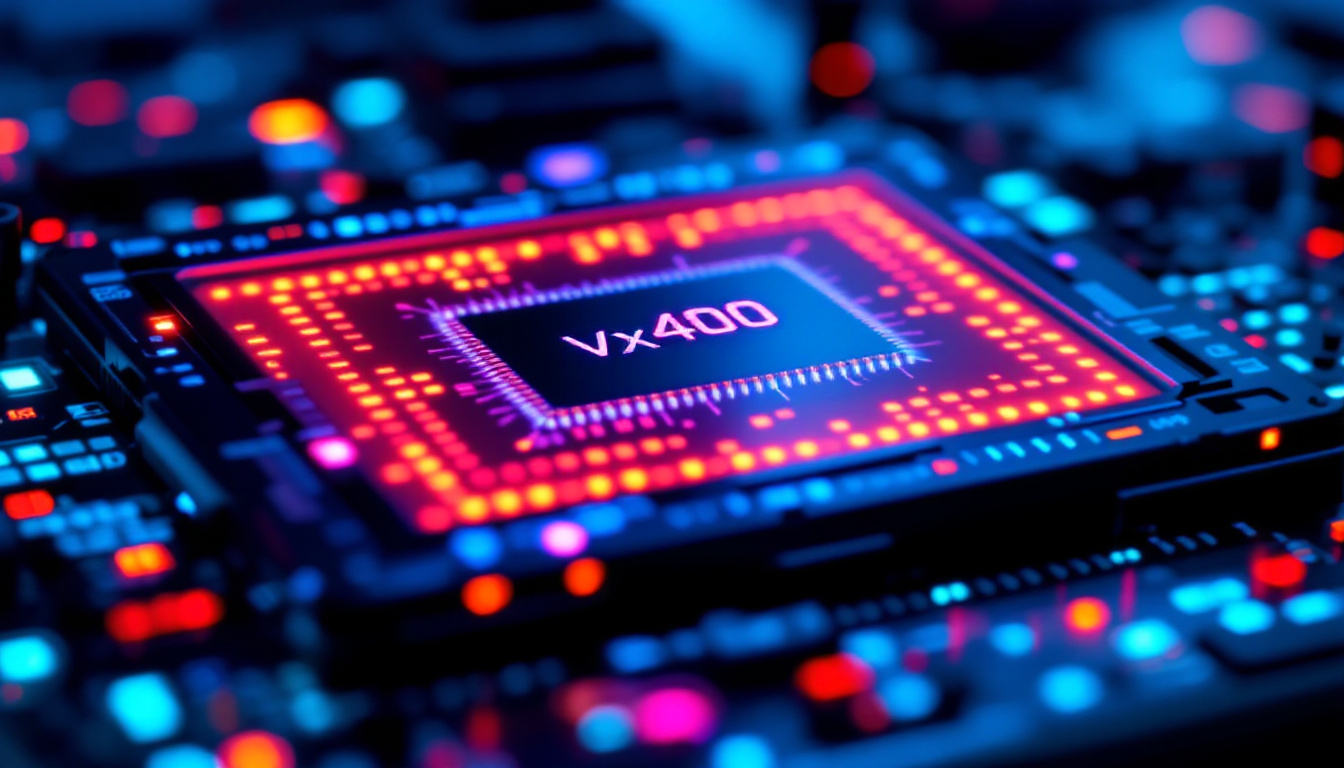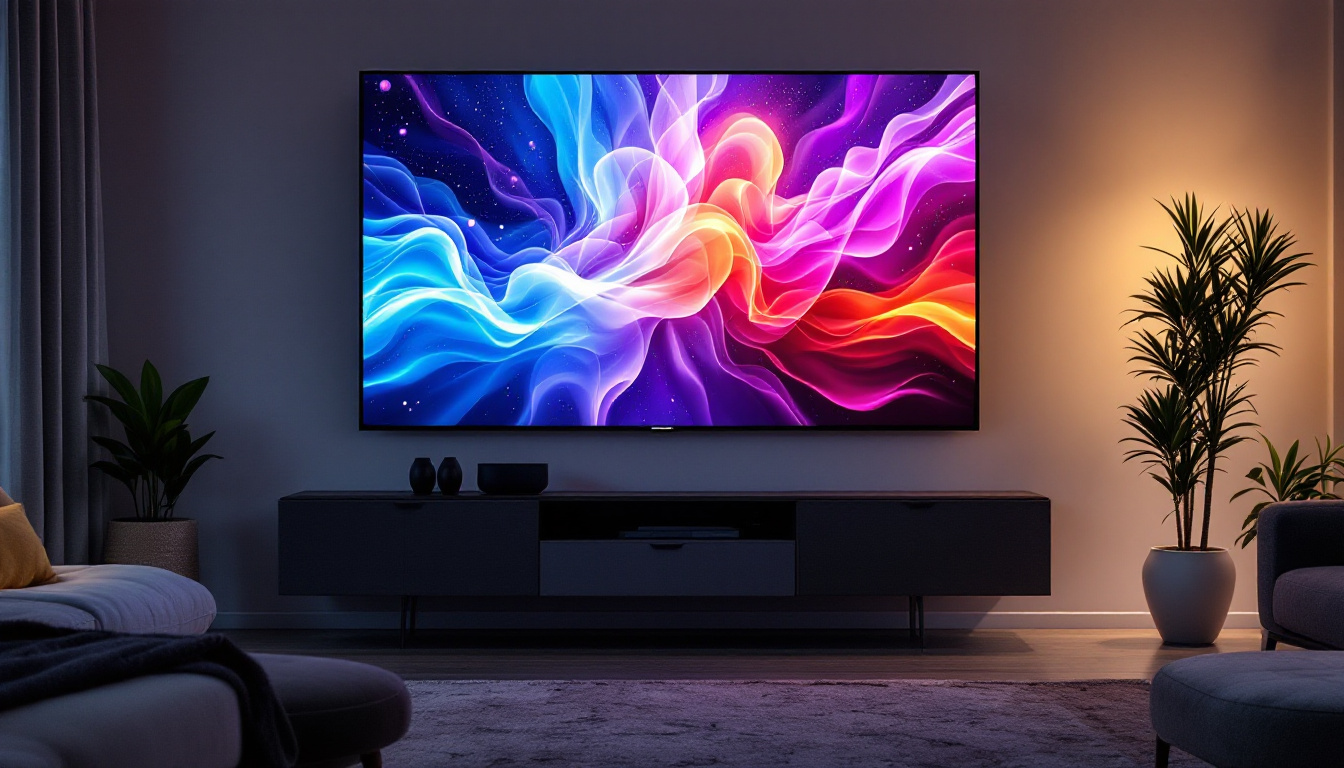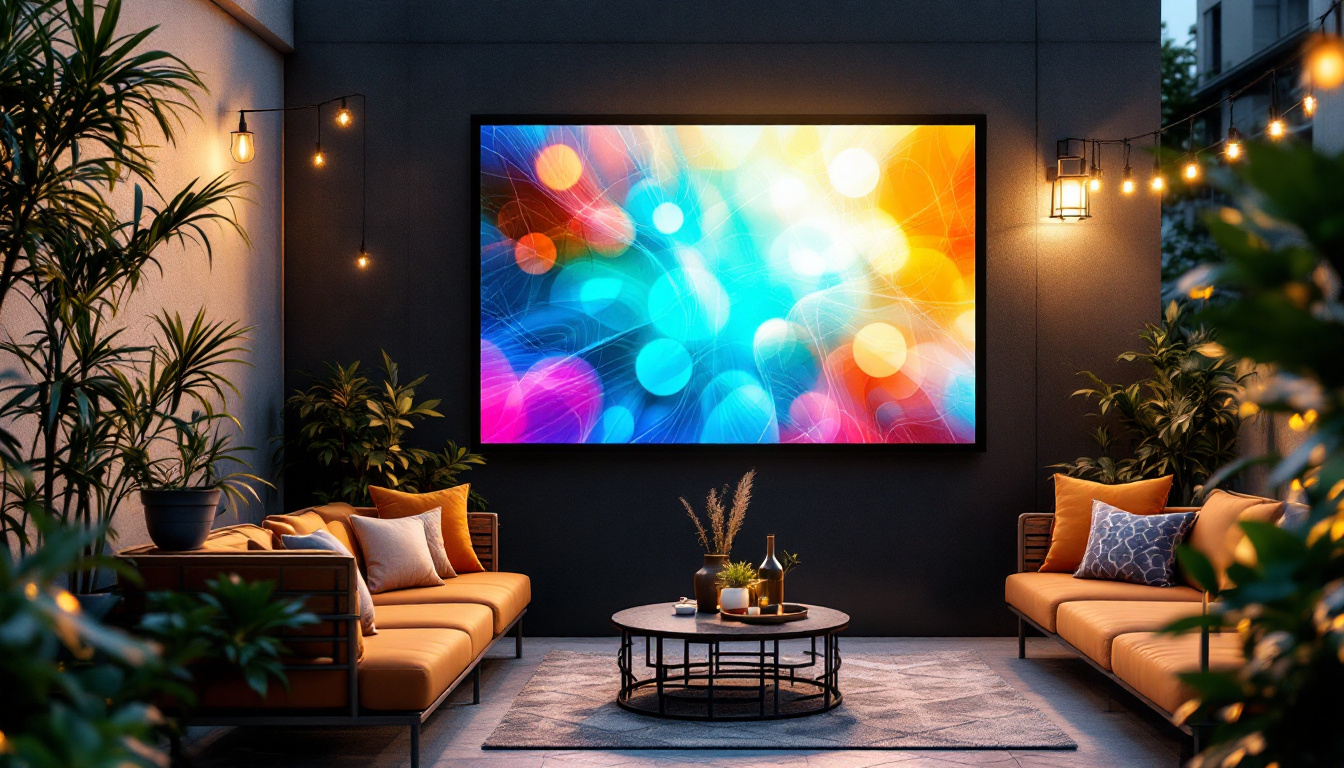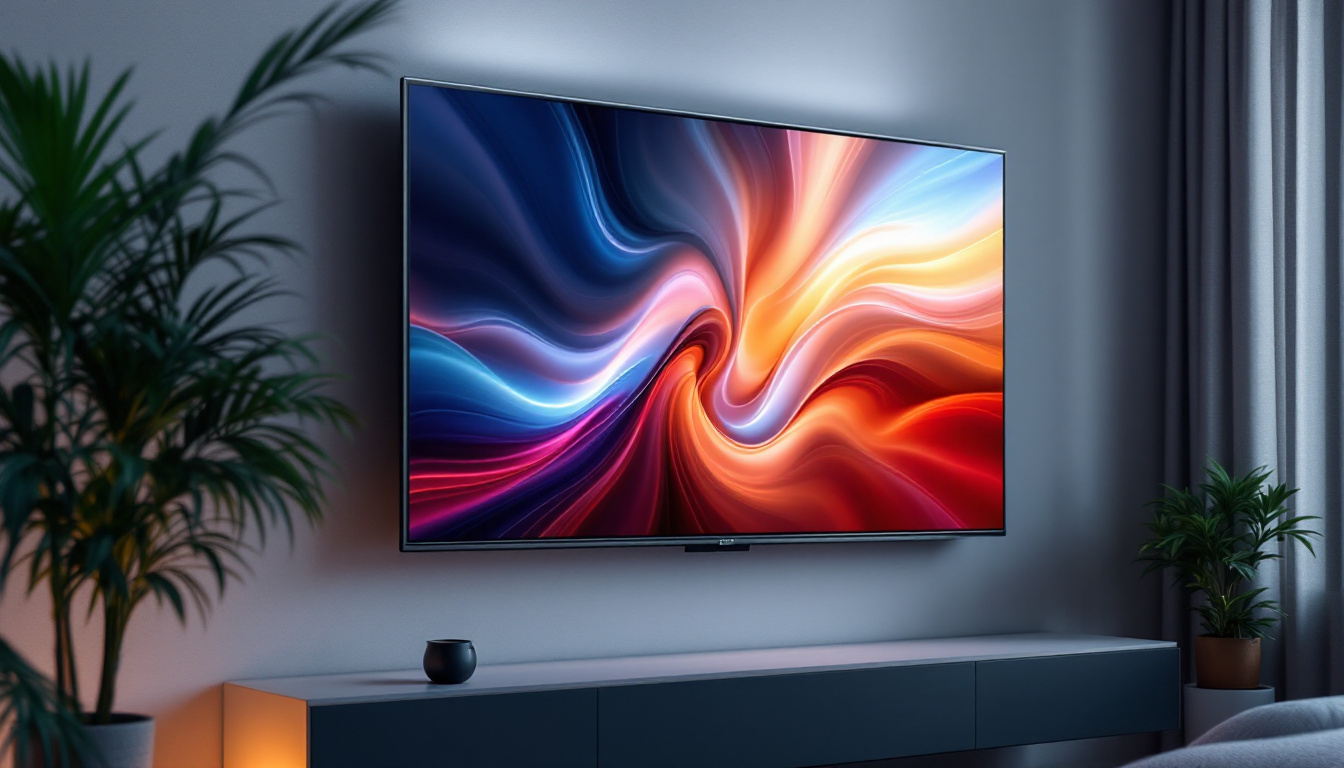MicroLED TVs: LED Display Explained
In the ever-evolving world of television technology, MicroLED TVs have emerged as a significant advancement in display technology. Offering superior picture quality, energy efficiency, and design flexibility, MicroLED represents a new frontier in home entertainment. This article delves into the intricacies of MicroLED technology, its advantages over traditional LED displays, and what consumers can expect from this innovative technology.
Understanding MicroLED Technology
MicroLED technology is a cutting-edge display technology that utilizes microscopic light-emitting diodes to create images. Unlike traditional LED displays, which use a backlight to illuminate pixels, MicroLEDs are self-emissive, meaning each pixel generates its own light. This fundamental difference allows for greater control over brightness, color accuracy, and contrast ratios.
The Basics of MicroLED
At its core, MicroLED technology consists of tiny individual LEDs that are smaller than 100 micrometers. These micro-sized diodes can be arranged in various configurations to form a complete display. The ability to control each pixel independently leads to remarkable enhancements in image quality, particularly in terms of black levels and color vibrancy.
MicroLED displays can achieve true blacks because when a pixel is turned off, it emits no light at all. This capability is a significant improvement over traditional LCD or even OLED displays, where light bleed can diminish the overall contrast ratio. Consequently, the viewing experience is more immersive and lifelike. Furthermore, the scalability of MicroLED technology allows for the creation of displays in various sizes and shapes, from small wearable devices to massive video walls, catering to a wide range of applications and industries.
How MicroLED Differs from Other Technologies
MicroLED technology stands out in comparison to other display technologies like OLED and traditional LED. While OLED displays are also self-emissive, they can suffer from issues such as burn-in, where static images can leave a permanent mark on the screen over time. MicroLED, on the other hand, does not have this drawback, offering longevity and durability.
Additionally, MicroLED displays boast superior brightness levels. This capability makes them ideal for various lighting conditions, whether in a dimly lit room or a bright living space. The color accuracy and wide color gamut further enhance the viewing experience, making MicroLED a compelling choice for both casual viewers and professional content creators. Moreover, the energy efficiency of MicroLED technology is noteworthy; it consumes less power compared to traditional displays, making it an environmentally friendly option. As the demand for high-quality visual experiences continues to grow, MicroLED technology is poised to revolutionize the way we interact with screens, paving the way for innovations in virtual reality, augmented reality, and beyond.
Advantages of MicroLED TVs
MicroLED TVs come with a plethora of advantages that set them apart from traditional LED and OLED displays. These benefits not only enhance the viewing experience but also contribute to the overall functionality and longevity of the television.
Exceptional Picture Quality
One of the most significant advantages of MicroLED technology is its exceptional picture quality. The self-emissive nature of MicroLEDs allows for perfect black levels and an impressive contrast ratio. This means that viewers can enjoy deep blacks alongside vibrant colors, creating a more dynamic and engaging visual experience.
Moreover, MicroLED TVs can reach higher brightness levels than OLEDs, making them suitable for various environments. Whether watching movies in a dark room or enjoying a sports game during the day, MicroLEDs maintain clarity and color accuracy across different lighting conditions. The ability to achieve peak brightness without compromising color fidelity is particularly beneficial for HDR (High Dynamic Range) content, which relies on a wide range of luminance levels to deliver a more lifelike image.
Energy Efficiency and Longevity
Energy efficiency is another notable benefit of MicroLED technology. Since each pixel emits its own light, MicroLED TVs can consume less power compared to traditional LED displays. This efficiency not only reduces electricity costs but also contributes to a lower carbon footprint, making MicroLED a more environmentally friendly option.
In terms of longevity, MicroLED displays are built to last. The technology is less prone to burn-in and degradation over time, which is a common issue with OLED screens. As a result, consumers can expect their MicroLED TVs to maintain performance and picture quality for many years. Additionally, the durability of MicroLED components means they can withstand a wider range of temperatures and humidity levels, making them suitable for various environments, from cozy living rooms to more humid areas like sunrooms.
Design Flexibility
MicroLED technology also offers unprecedented design flexibility. The modular nature of MicroLED panels allows manufacturers to create displays of various sizes and shapes. This adaptability enables consumers to customize their viewing experience, whether they prefer a large wall-mounted display or a more compact setup.
Additionally, the thin profile of MicroLED panels allows for sleek and modern designs that can seamlessly integrate into any home decor. This versatility is appealing to consumers looking for both functionality and aesthetics in their home entertainment systems. Furthermore, the ability to create curved or even irregularly shaped screens opens up new possibilities for immersive viewing experiences, allowing for installations that can wrap around a room or fit into unique architectural spaces. This level of customization not only enhances the visual appeal but also transforms the way viewers interact with their media, creating a more engaging atmosphere for movies, gaming, and even art displays.
Challenges and Considerations
While MicroLED technology holds immense promise, it is not without its challenges. Understanding these challenges can help consumers make informed decisions when considering a MicroLED TV.
Cost Implications
One of the primary challenges associated with MicroLED TVs is their cost. Currently, the technology is relatively expensive compared to traditional LED and OLED displays. The manufacturing process for MicroLED panels is complex and requires advanced technology, contributing to higher retail prices.
As the technology matures and production processes become more streamlined, it is expected that prices will decrease over time. However, for consumers looking for budget-friendly options, MicroLED may not be the most accessible choice at present. In addition to the initial purchase price, potential buyers should also consider the long-term investment aspect. MicroLEDs are known for their longevity and energy efficiency, which could lead to savings on electricity bills and replacement costs over the lifespan of the TV. This aspect may make the higher upfront cost more palatable for those who prioritize durability and performance.
Availability and Market Penetration
Another consideration is the availability of MicroLED TVs in the market. While some manufacturers have begun to release MicroLED models, the selection is still limited compared to more established technologies. As demand for MicroLED grows, it is anticipated that more brands will enter the market, leading to a wider variety of options for consumers.
Additionally, consumers should be aware that the technology is still evolving. Future advancements may lead to further improvements in picture quality, energy efficiency, and affordability, making it worthwhile to keep an eye on developments in the MicroLED space. The current landscape is characterized by a few high-end models that showcase the capabilities of MicroLED, often aimed at enthusiasts and early adopters. As production techniques improve, we may see more mid-range options emerge, catering to a broader audience. Furthermore, the potential for customizable screen sizes and shapes with MicroLED technology could revolutionize home entertainment setups, allowing for unique installations that were previously impractical with traditional display technologies.
Future of MicroLED Technology
The future of MicroLED technology appears promising, with ongoing research and development aimed at overcoming current challenges and enhancing the technology’s capabilities. As manufacturers invest in innovation, several trends are emerging that could shape the future of MicroLED TVs.
Advancements in Manufacturing Processes
One of the key areas of focus for future MicroLED development is improving manufacturing processes. As techniques become more refined, it is expected that production costs will decrease, making MicroLED TVs more accessible to a broader audience. Innovations such as automated assembly and improved yield rates could significantly impact the affordability of these displays.
Integration with Smart Technology
As smart home technology continues to gain traction, the integration of MicroLED displays with smart systems is likely to become more prevalent. Future MicroLED TVs may feature enhanced connectivity options, allowing seamless integration with smart home devices, voice assistants, and streaming services. This capability would enhance the overall user experience, making it easier to access content and control the viewing environment.
Potential Applications Beyond Home Entertainment
Beyond the realm of home entertainment, MicroLED technology has potential applications in various fields, including commercial displays, digital signage, and even wearable technology. The versatility of MicroLED panels makes them suitable for a wide range of uses, from large-scale advertising displays to personal devices like smart glasses.
As the technology continues to evolve, it is likely that new and innovative applications will emerge, further expanding the reach of MicroLED beyond traditional television screens.
Conclusion
MicroLED TVs represent a significant leap forward in display technology, offering unparalleled picture quality, energy efficiency, and design flexibility. While there are challenges to overcome, such as cost and market availability, the future of MicroLED technology looks bright. As advancements continue to unfold, consumers can expect to see more options and improved performance in the MicroLED space.
For those seeking a premium viewing experience, MicroLED TVs are worth considering. With their ability to deliver stunning visuals and their potential for integration with smart technology, MicroLED displays are poised to redefine home entertainment in the years to come.
Discover the Future of Visual Experience with LumenMatrix
Ready to elevate your viewing experience with the latest in display technology? LumenMatrix, a pioneer in LED innovation, invites you to explore our comprehensive range of LED display solutions. From the comfort of your home to the excitement of outdoor events, our Indoor and Outdoor LED Wall Displays, Vehicle LED Displays, and more are designed to transform any space into a dynamic visual spectacle. Embrace the future of digital signage and create unforgettable visual narratives with LumenMatrix. Check out LumenMatrix LED Display Solutions today and witness how we bring your vision to life with unparalleled clarity and impact.

